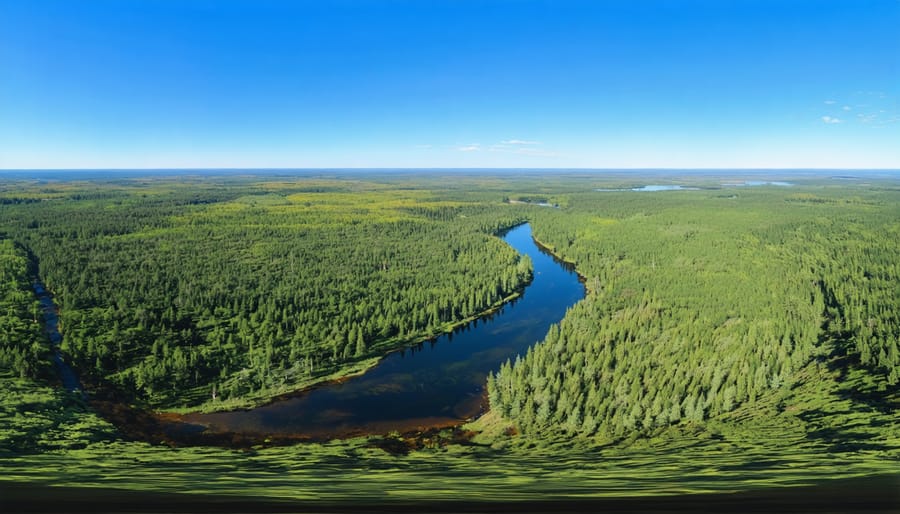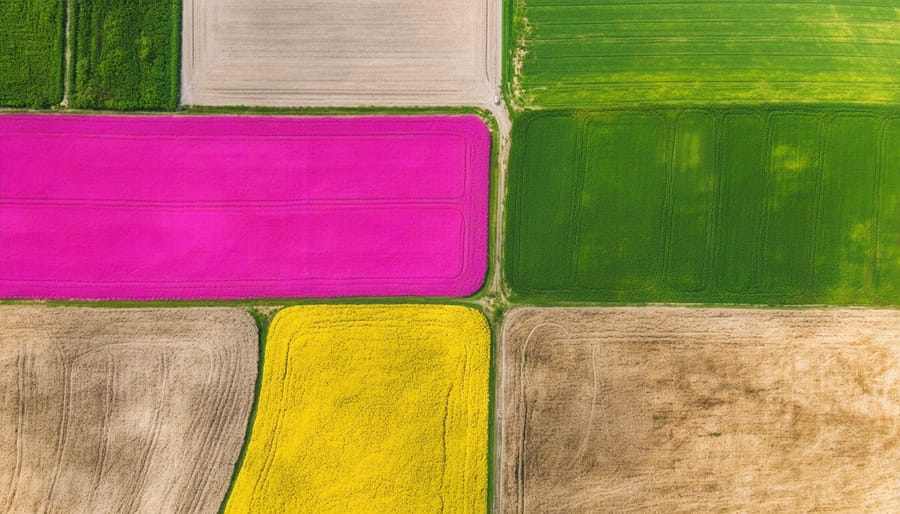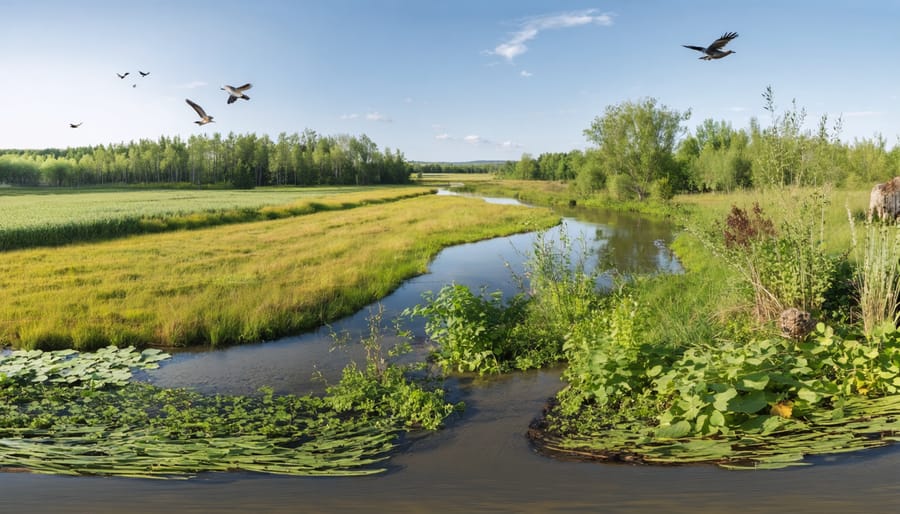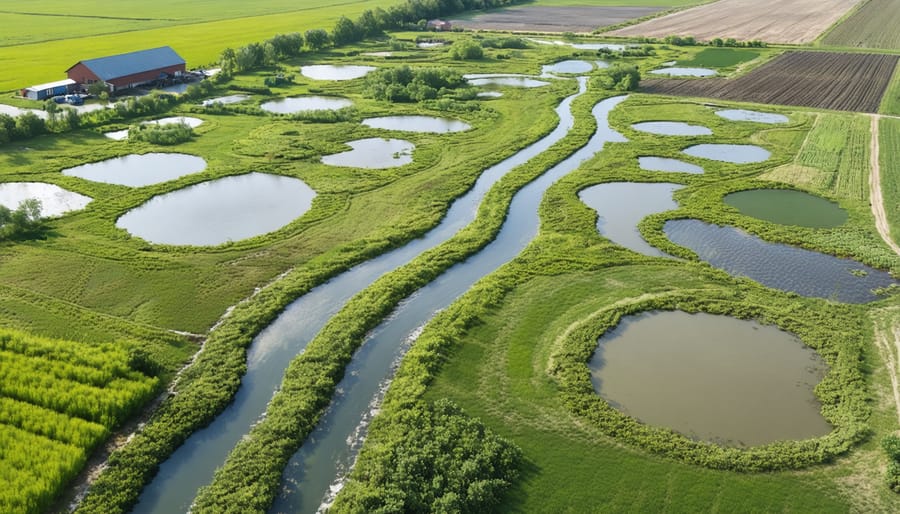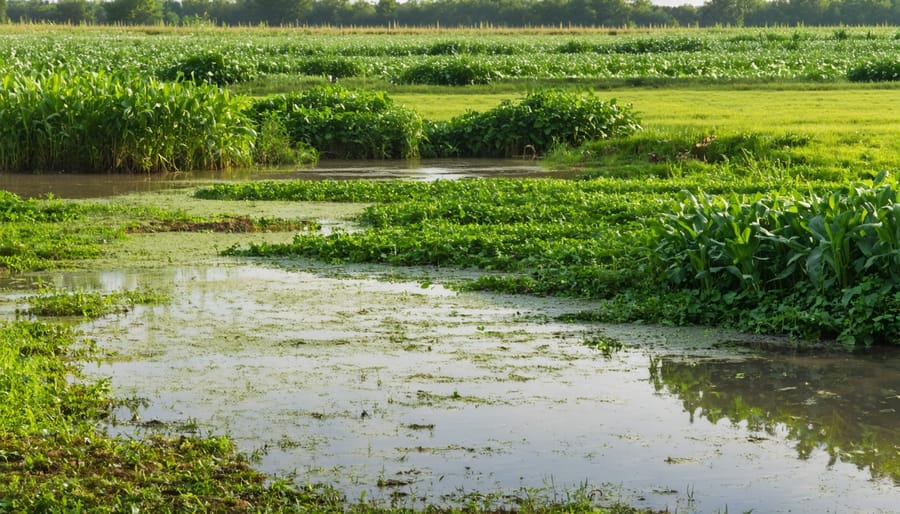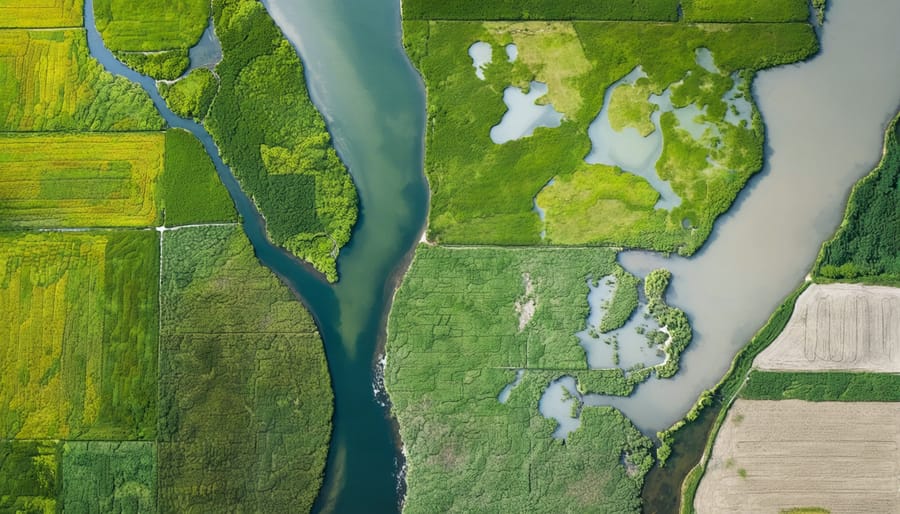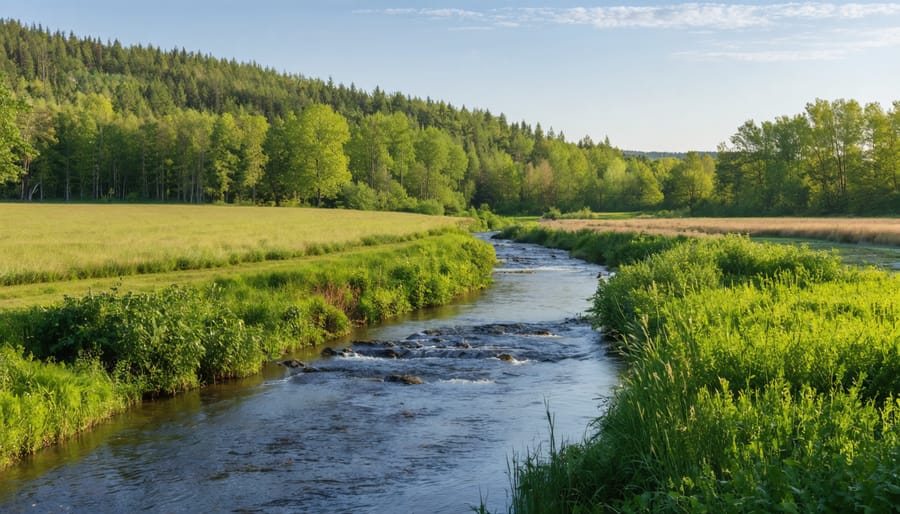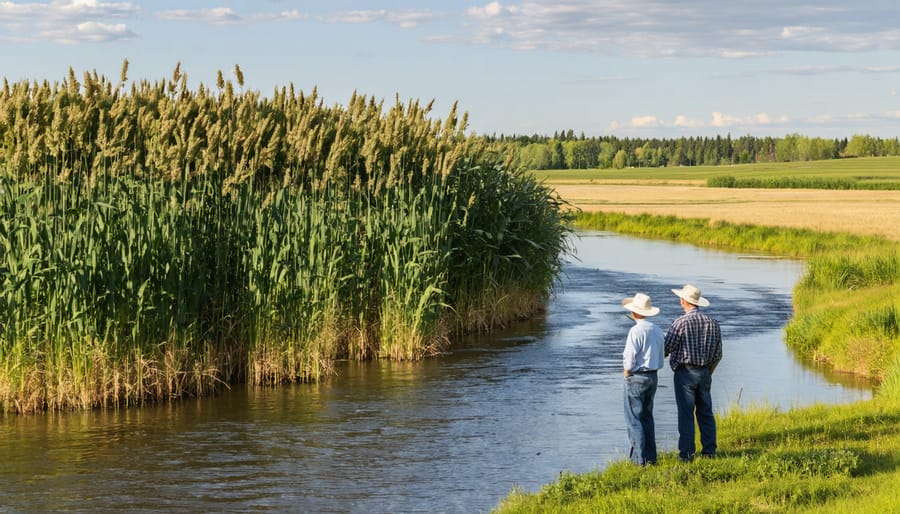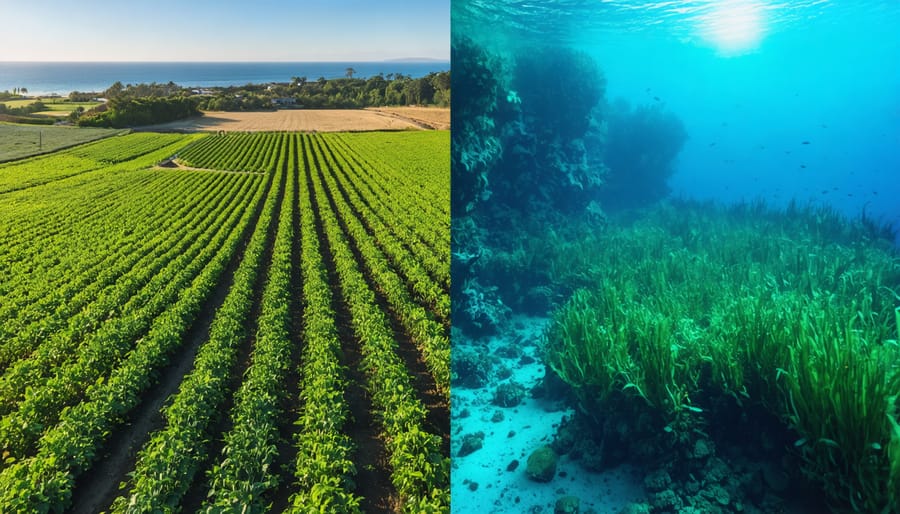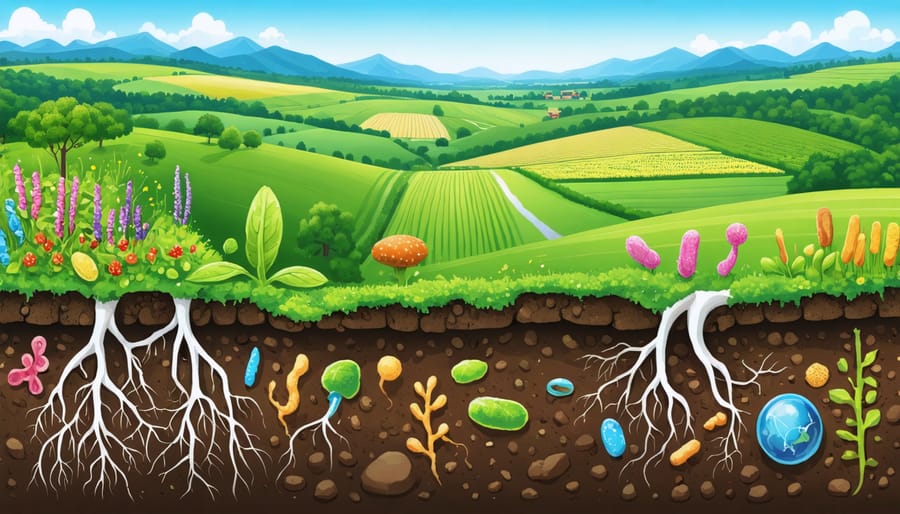Canada’s boreal forest stands as a vital climate change champion, storing more carbon than all tropical rainforests combined. Stretching across 552 million hectares, this vast northern ecosystem captures roughly 12% of the world’s land-based carbon storage, making it essential to global climate stability. Yet this crucial carbon sink faces unprecedented threats from rising temperatures, intensifying wildfires, and changing precipitation patterns. As temperatures in Canada’s boreal region warm at twice the global average, the delicate balance between carbon storage and release hangs in the balance. For Alberta’s agricultural community, these changes directly impact local weather patterns, growing seasons, and water availability, creating an urgent need to understand and adapt to shifting forest dynamics. The interconnected relationship between our farmlands and the surrounding boreal forest requires immediate attention and action to preserve both our agricultural heritage and this irreplaceable ecosystem.
The Boreal Forest: Canada’s Climate Champion
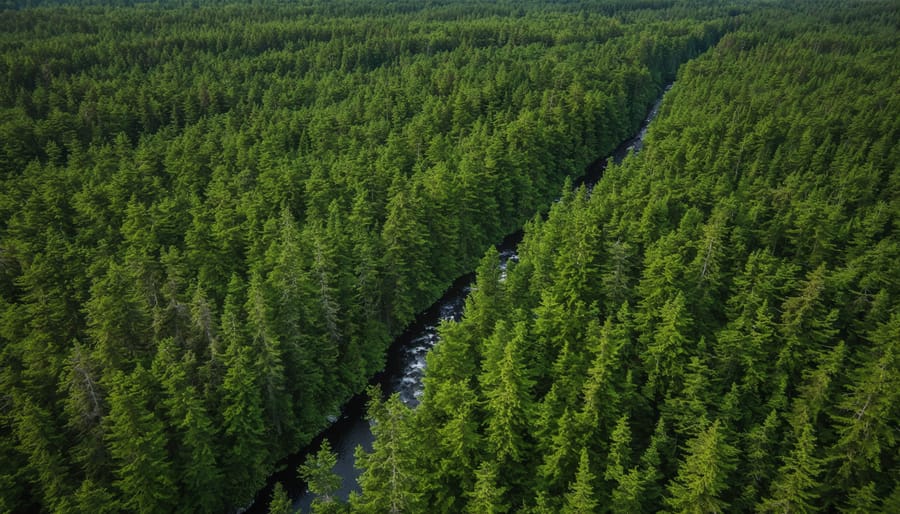
Alberta’s Green Giant
Alberta’s boreal forest stands as one of Canada’s most vital natural resources, spanning approximately 38 million hectares and playing a crucial role in climate regulation. This vast ecosystem demonstrates remarkable carbon storage potential, with estimates suggesting it holds nearly 6.7 billion tonnes of carbon.
For Alberta farmers, this natural powerhouse serves as more than just a backdrop to agricultural operations. The boreal forest creates beneficial microclimates that help protect crops from extreme weather events and provides essential ecosystem services like water regulation and soil stabilization. Recent research from the University of Alberta shows that farms bordering boreal regions experience better moisture retention and more stable local temperatures.
The forest’s ability to sequester carbon rivals that of tropical rainforests, storing roughly 227 tonnes of carbon per hectare. This storage occurs not only in trees but also in the forest floor’s thick organic layer and underlying soil. For the agricultural community, understanding and protecting these forests means safeguarding natural infrastructure that supports sustainable farming practices while contributing to climate change mitigation.
Nature’s Carbon Vault
Our boreal forests are nature’s most impressive carbon bank, working tirelessly to keep carbon locked away from our atmosphere. As farmers, we’re familiar with how soil stores nutrients, and the boreal forest takes this to a whole new level. These northern forests store roughly 208 billion tonnes of carbon – that’s equivalent to 20 years’ worth of global carbon emissions.
The storage system works in three main layers. First, there’s the trees themselves, which pull carbon dioxide from the air through photosynthesis and lock it away in their trunks, branches, and leaves. A single mature spruce can store as much carbon as your truck emits in a year of farm work.
But the real carbon storage champions are underground. The forest floor’s rich soil layer contains about five times more carbon than what’s stored in the trees above. This soil is particularly special because it’s often frozen or cold, which slows down decomposition and keeps carbon locked in place.
Then there’s the peat – those boggy areas we sometimes see in low-lying forest sections. These peatlands are carbon storage powerhouses, holding up to ten times more carbon per hectare than other soil types. Here in Alberta, we have some of the most extensive peatlands in the boreal forest, making our region particularly important for carbon storage.
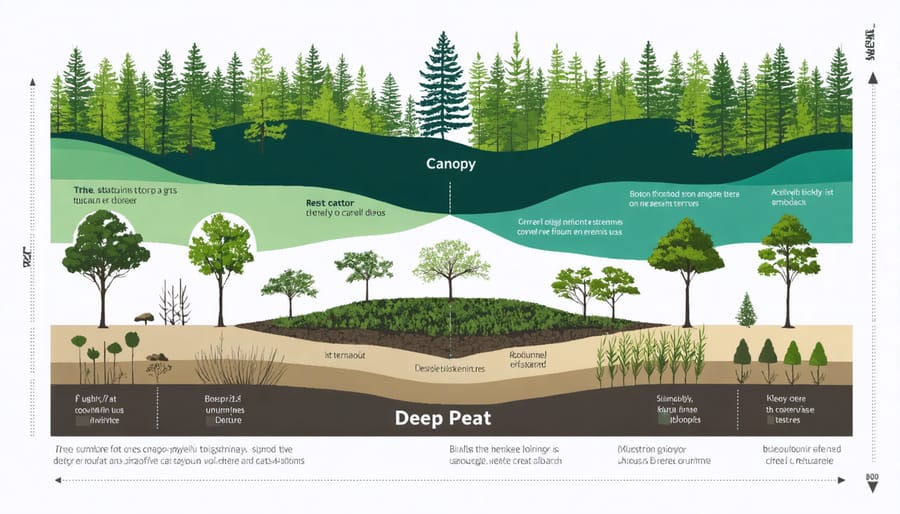
Climate Change: A Two-Way Street
Impact on Forest Health
Climate change is significantly impacting the health of our boreal forests, with effects that ripple through the entire ecosystem. Here in Alberta, we’re seeing firsthand how warming temperatures are altering these vital landscapes. Local forest managers have observed longer growing seasons, but this apparent benefit comes with considerable challenges.
One of the most concerning changes is the increased frequency and severity of forest fires. Data from Natural Resources Canada shows that the average area burned annually has doubled since the 1970s, affecting both forest biodiversity and nearby farming communities. The warmer, drier conditions also make trees more vulnerable to pest infestations, particularly the mountain pine beetle, which has already impacted over 16 million hectares of forest in Western Canada.
Changes in precipitation patterns are creating additional stress on our boreal forests. While some areas experience more rainfall, others face prolonged dry spells, leading to drought conditions that weaken trees and reduce their natural defenses against disease. This variability particularly affects species like white spruce and black spruce, which are crucial for maintaining forest structure.
For our farming communities, these changes in forest health have real implications. Healthy boreal forests help regulate local climate patterns, protect water resources, and provide natural windbreaks. Working together with local forestry experts, many Alberta farmers are now participating in programs to monitor forest health and implement protective measures on their properties, ensuring these valuable ecosystems continue to support our agricultural activities.
Feedback Loops
The relationship between our boreal forests and climate change works like a two-way street, where changes in one directly affect the other. When our forests become degraded through wildfires, pest infestations, or land-use changes, they release stored carbon back into the atmosphere. This creates what we call a positive feedback loop – but don’t let the name fool you, there’s nothing positive about it.
Think of it as a snowball effect: as more carbon is released, it contributes to warmer temperatures, which in turn create conditions that harm our forests even more. Here in Alberta, we’ve seen this firsthand with the mountain pine beetle infestations that have damaged significant portions of our forestland. The warmer winters that used to keep these beetles in check aren’t as reliable anymore.
These feedback loops can be particularly concerning for our farming communities. As forest degradation accelerates, we experience more extreme weather events, changes in precipitation patterns, and shifting growing seasons. Local farmer Jim Peterson from Peace River notes, “We’re seeing changes happen faster than ever before. The spring thaw comes earlier, and summer droughts are more frequent.”
However, understanding these connections helps us make informed decisions about land management and conservation. By protecting our boreal forests through sustainable practices, we can help slow down these feedback loops and maintain the natural balance that supports our agricultural activities.
Practical Solutions for Alberta Farmers
Buffer Zone Management
Effective buffer zone management between agricultural land and boreal forests plays a crucial role in preserving both ecosystems while maintaining productive farmland. For Alberta farmers, establishing and maintaining these transition zones requires careful planning and ongoing stewardship.
A well-managed buffer zone should span at least 30 metres from the forest edge, incorporating native vegetation in graduated layers. Start with shorter plants near your crops, transitioning to taller shrubs and eventually matching the forest edge. This graduated approach helps reduce wind impact on crops while providing wildlife corridors and natural pest control.
Local success stories demonstrate the benefits of proper buffer management. The Peace River region’s collaborative approach between farmers and forestry experts has shown that maintaining native berry bushes and wildflowers in buffer zones supports essential pollinators while reducing soil erosion by up to 85%.
Consider these practical guidelines for your buffer zone:
– Plant drought-resistant native species that won’t compete with crops
– Maintain seasonal mowing schedules that protect nesting wildlife
– Leave fallen logs and brush piles to support beneficial insects
– Monitor for invasive species regularly
– Avoid using chemical sprays within 10 metres of the forest edge
Remember that healthy buffer zones act as natural firebreaks and help protect your farmland from forest fires, an increasingly important consideration in our changing climate. Working with neighboring farmers to create continuous buffer zones can multiply these benefits across the landscape.
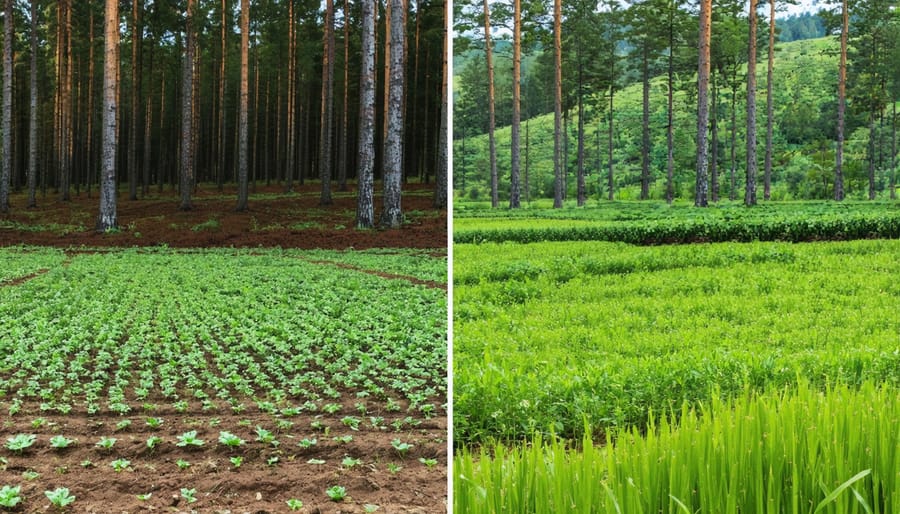
Sustainable Forest-Farm Integration
Integrating farming practices with forest conservation isn’t just good stewardship – it’s smart business for Alberta farmers. By adopting forest-farm integration techniques, producers can help protect forest biodiversity while creating additional revenue streams and improving farm resilience.
Successful integration starts with understanding your forest edge zones. These transition areas between woodland and farmland are perfect for establishing windbreaks, which reduce soil erosion and provide shelter for livestock. Many Alberta farmers have found success with silvopasture systems, where cattle graze among carefully managed tree stands, providing natural fertilization while maintaining forest health.
Forest farming presents another opportunity through the cultivation of shade-tolerant crops like mushrooms, medicinal herbs, and maple syrup production. These high-value products can supplement traditional farm income while preserving forest cover. Local success stories include the Thompson family near Peace River, who generate 30% of their annual revenue from forest products while maintaining healthy tree coverage.
Consider implementing rotational grazing systems that incorporate forested areas. This practice allows livestock to benefit from natural shelter while controlling undergrowth and reducing fire risk. Maintain buffer zones of at least 30 metres between intensive farming operations and forest edges to protect water quality and wildlife corridors.
Remember to work with local forestry experts and agricultural extension services when developing your integration plan. They can help identify optimal areas for forest-farm activities and ensure compliance with regional regulations. Many Alberta farmers have found that joining local sustainable agriculture networks provides valuable support and knowledge-sharing opportunities for successful forest-farm integration.
Community Conservation Initiatives
Across Alberta, farmers and local communities are taking the lead in protecting our precious boreal forests through innovative partnerships and grassroots initiatives. The Forest Stewardship Network, launched by Alberta farmers in 2019, demonstrates how agricultural communities can integrate sustainable farming practices with forest conservation.
Local conservation groups offer numerous ways for farmers to get involved, from tree planting programs to wildlife corridor maintenance. The Boreal Farmers’ Alliance, active in northern Alberta, provides resources and support for landowners looking to preserve wooded areas while maintaining productive agricultural operations.
Notable initiatives include the Buffer Zone Project, where farmers create protected forest strips between fields, and the Carbon Credit Program, which rewards landowners for maintaining forest cover. Community workshops hosted by agricultural extension offices help farmers learn about forest management techniques that benefit both the environment and farm operations.
Getting involved is straightforward – contact your local agricultural fieldman or conservation authority to learn about programs in your area. Many offer cost-sharing opportunities for conservation projects and technical support for implementing forest protection measures. By working together, Alberta’s farming community is helping ensure our boreal forests continue to serve as vital carbon sinks for future generations.
As stewards of the land, Alberta farmers have a unique opportunity to contribute to the protection of our vital boreal forests. These forests aren’t just trees; they’re an essential part of our agricultural ecosystem and a crucial weapon in our fight against climate change. By adopting sustainable farming practices that complement forest conservation, we can help maintain the delicate balance between agricultural productivity and environmental preservation.
The path forward requires a community-wide commitment. Consider joining local conservation initiatives, participating in agricultural extension programs focused on sustainable practices, or working with neighboring farmers to create wildlife corridors that connect with boreal forests. Small changes in farming practices, such as implementing buffer zones between cropland and forest edges, can make a significant difference in protecting these valuable ecosystems.
Remember that protecting boreal forests isn’t just an environmental responsibility—it’s an investment in our agricultural future. These forests help regulate local climate patterns, maintain water quality, and support the pollinators that many crops depend on. By working together, Alberta’s farming community can lead by example in showing how agriculture and forest conservation can thrive side by side.
Let’s take action today. Connect with your local agricultural extension office to learn about available resources and programs for forest-friendly farming practices. Our collective efforts will ensure that future generations of farmers can continue to benefit from the invaluable services provided by healthy boreal forests.

